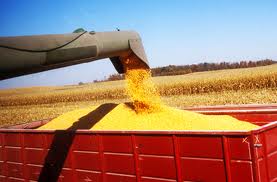 Every crop protection product that reaches the market costs $286 million and takes 11 years of research and development to ensure the highest safety and efficacy standards, according to a new report published today. The report found the industry spent a total of $2.6 billion on new innovations in 2014.
Every crop protection product that reaches the market costs $286 million and takes 11 years of research and development to ensure the highest safety and efficacy standards, according to a new report published today. The report found the industry spent a total of $2.6 billion on new innovations in 2014.
CropLife International (CLI), CropLife America (CLA) and the European Crop Protection Association (ECPA) commissioned Phillips McDougall, an independent consultant specializing in market analysis for the agrochemical industry, to research the cost of bringing a new active ingredient to market.
The report found the cost of bringing a new product to market has increased by 55 percent since the turn of the century. Much of the increase in cost can be attributed to a rise in the volume and complexity of environmental safety and toxicology data required by regulatory bodies to ensure products are safe.
Meanwhile the time commitment to bring a product to market has increased from 8 years in 1995 to more than 11 years now, reflecting the rigorous research and development phase and delays in regulatory decisions.
CropLife International CEO and President Howard Minigh said: “The crop protection industry continues to invest heavily in cutting edge innovations to help farmers around the world to protect their crops from pests. Given the growing cost, the report demonstrates why we need predictable and risk-based regulations alongside robust intellectual property rights to give companies the confidence to continue to invest.”
CropLife America President and CEO Jay Vroom stated: “Crop protection products have never been more thoroughly tested and screened to ensure product safety, which is why regulators must ensure that the process for review does not change at a moment’s notice. The United States established two governing Acts, FIFRA and FQPA, that guarantee health and safety of the public, while ensuring a clear path for pesticide registration. The recent regulatory decisions have strayed from these guidelines by depending on less stringent scientific standards, causing concern about the ability for companies to bring new, more environmentally sound technologies to the market.”
Click here to see more...